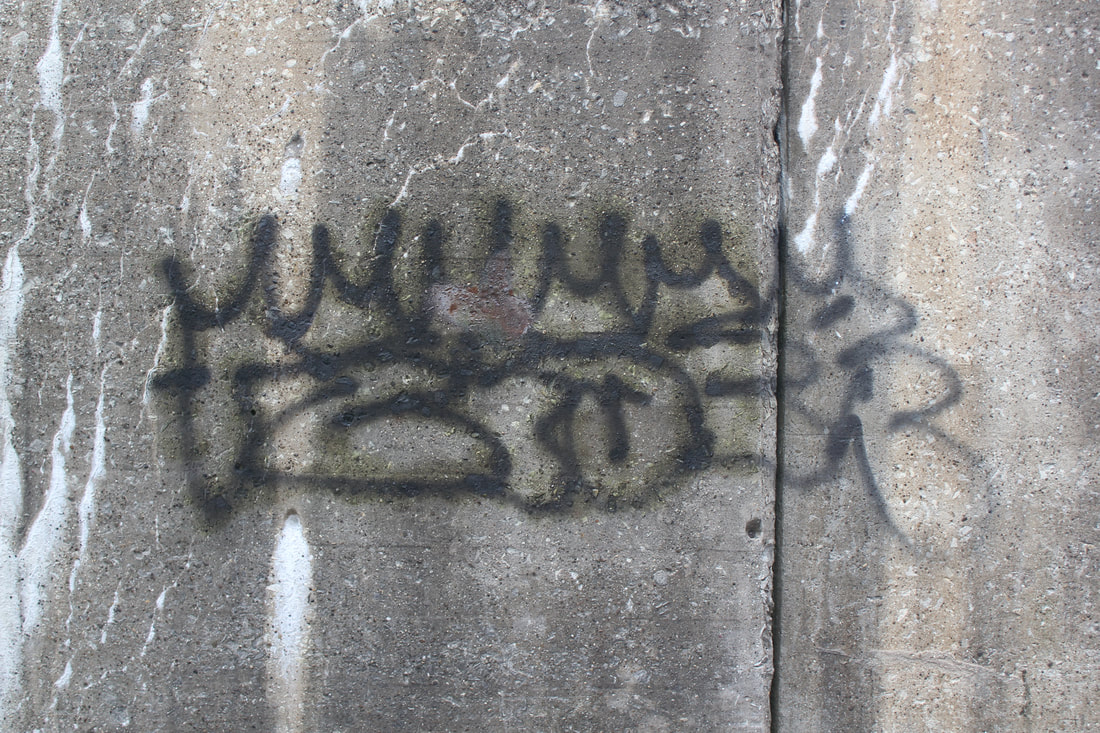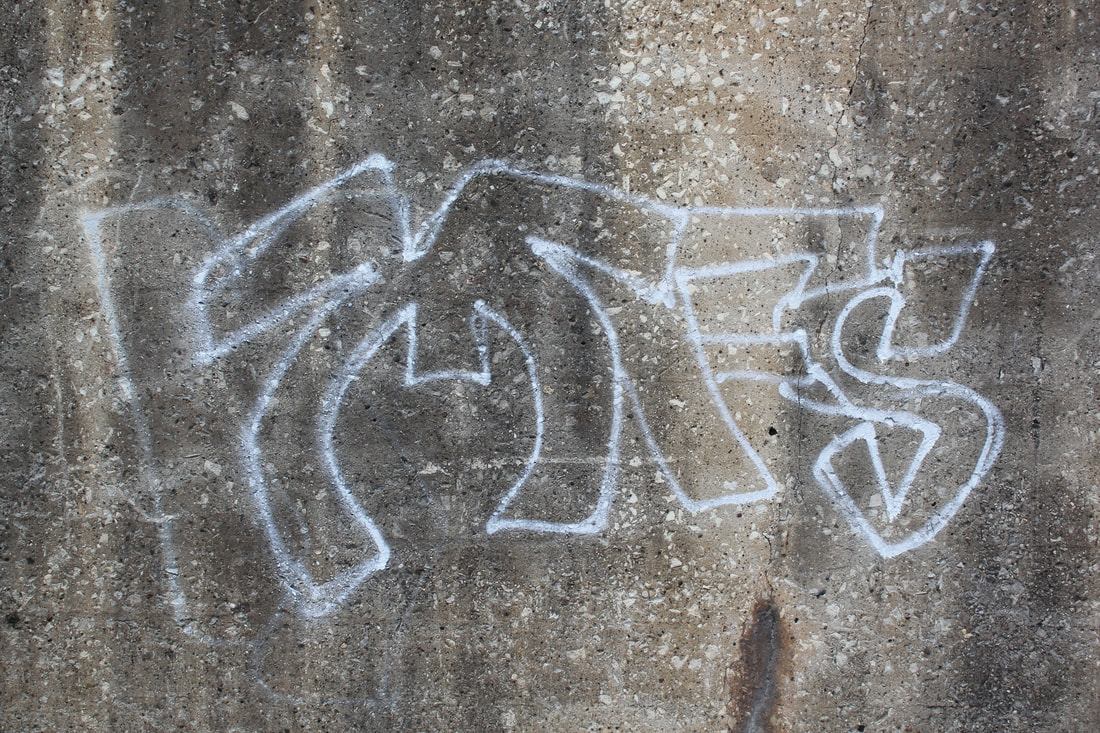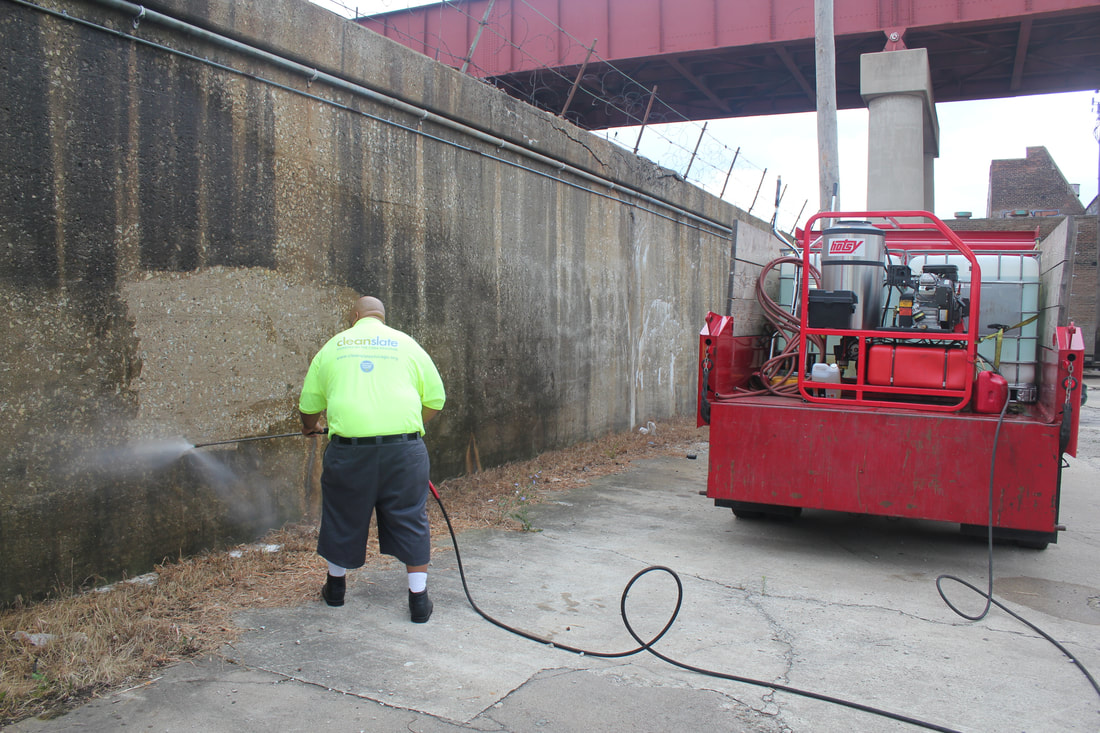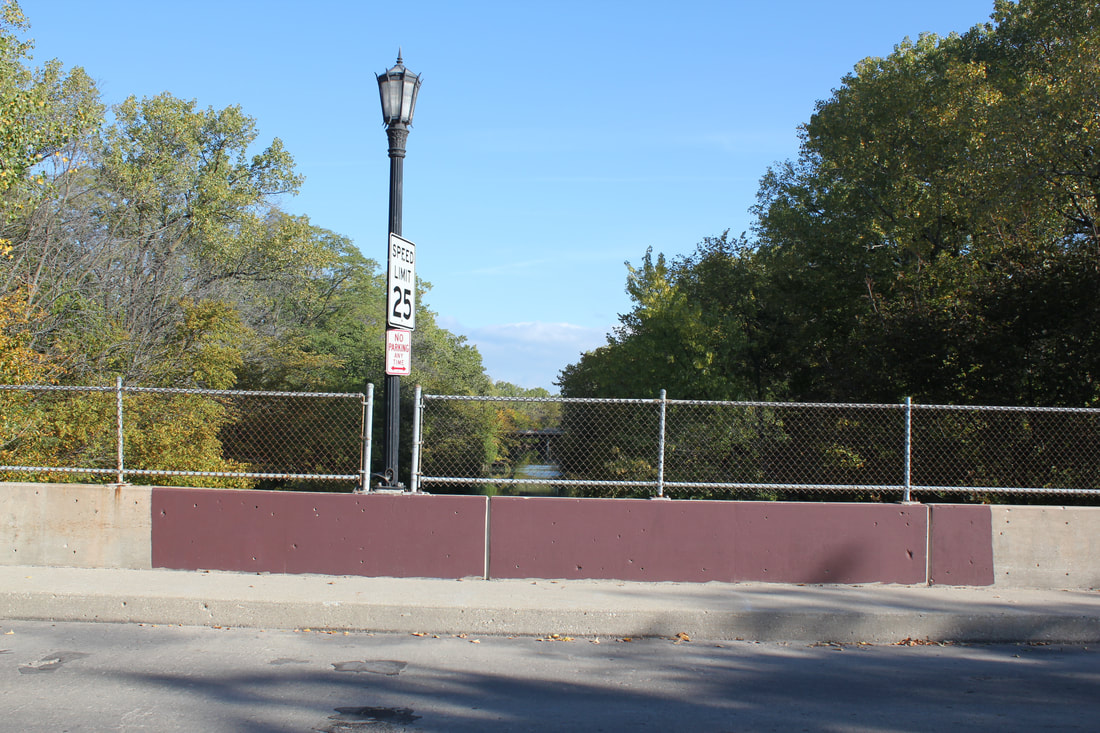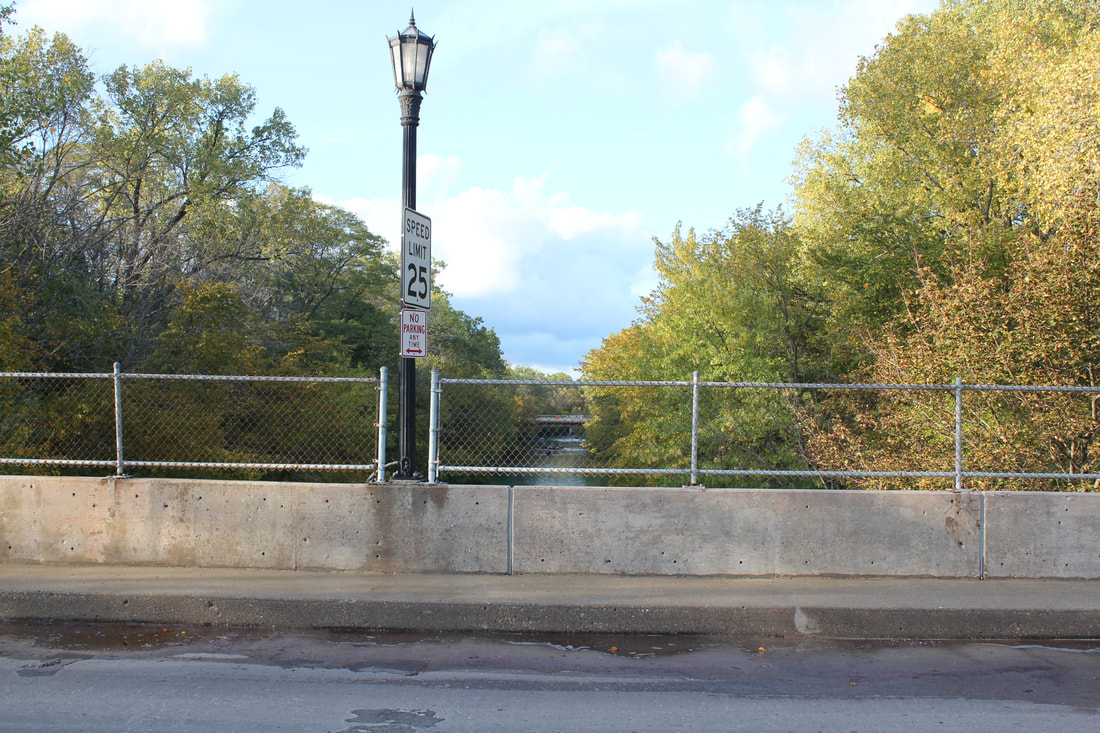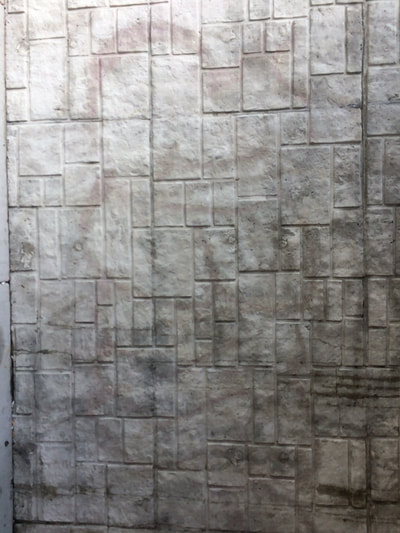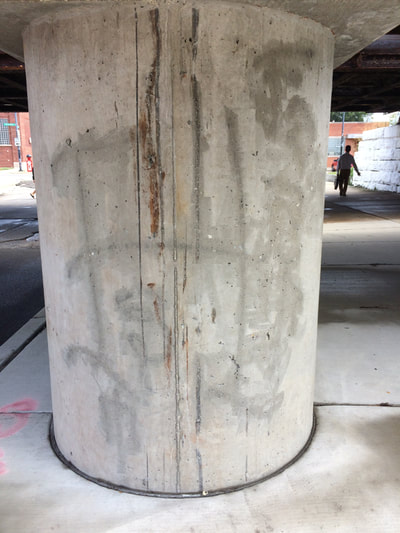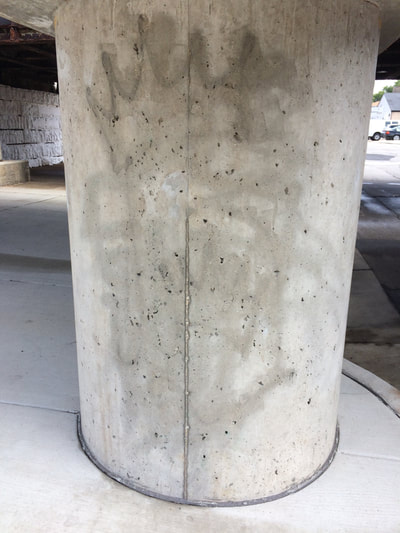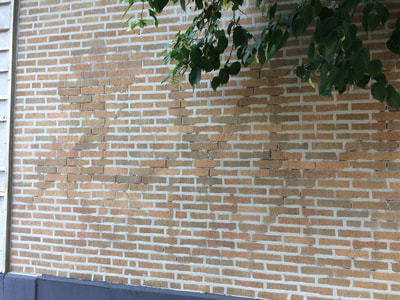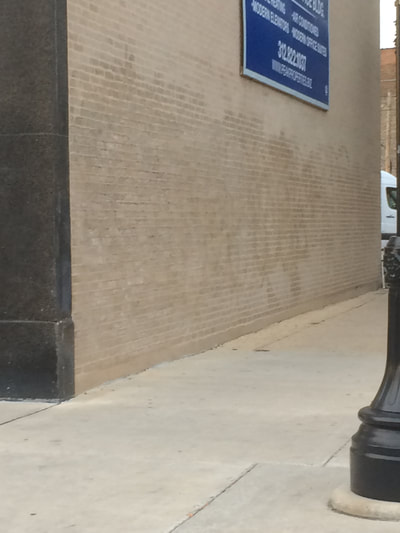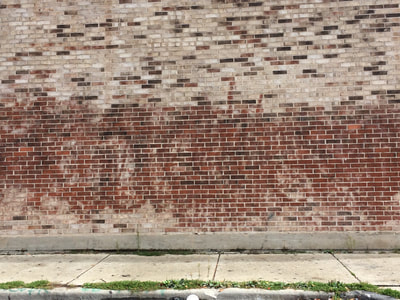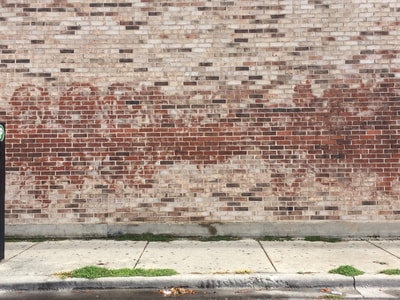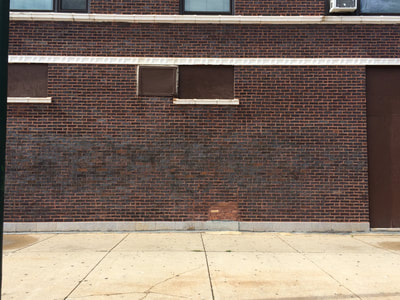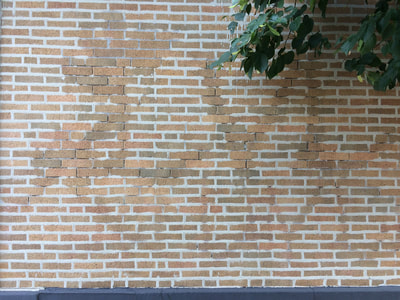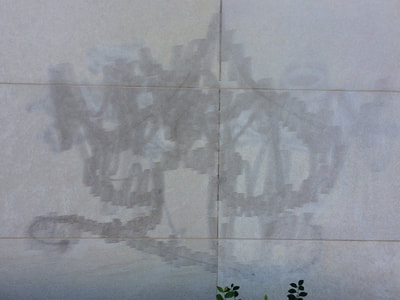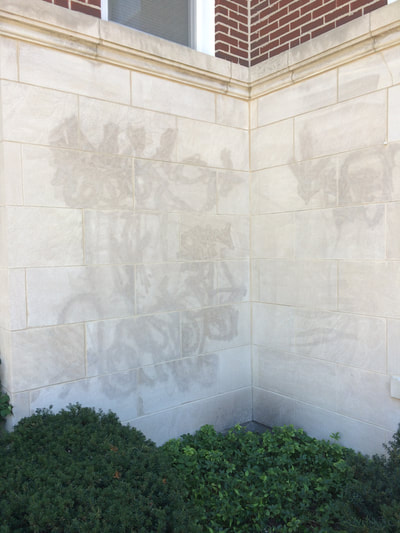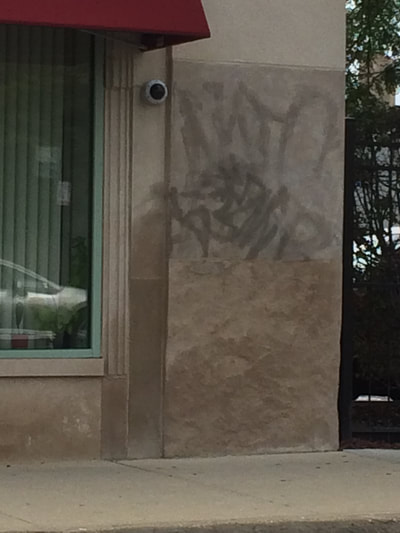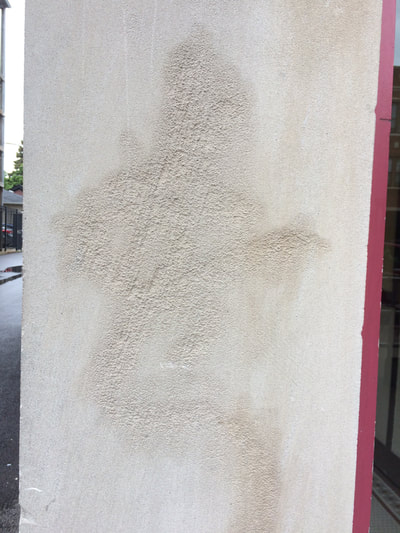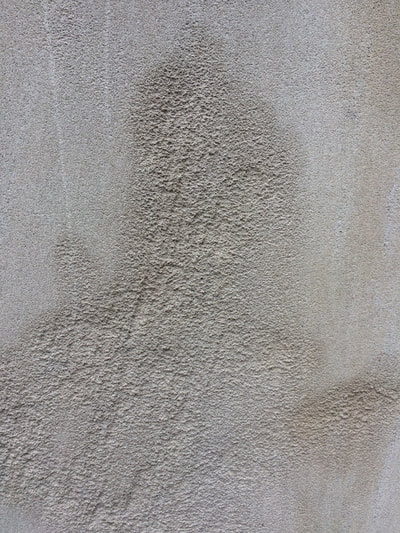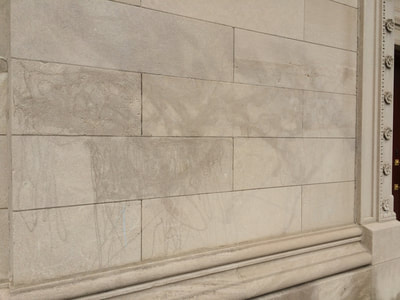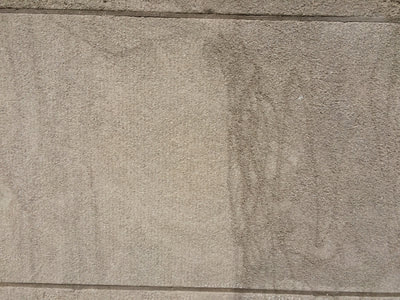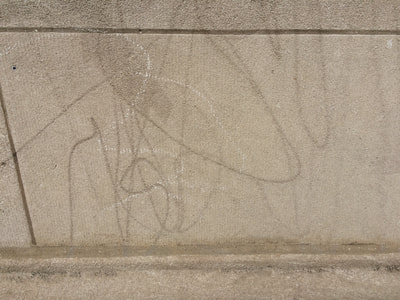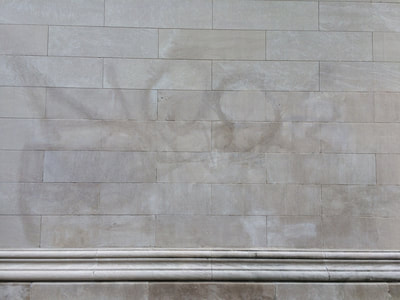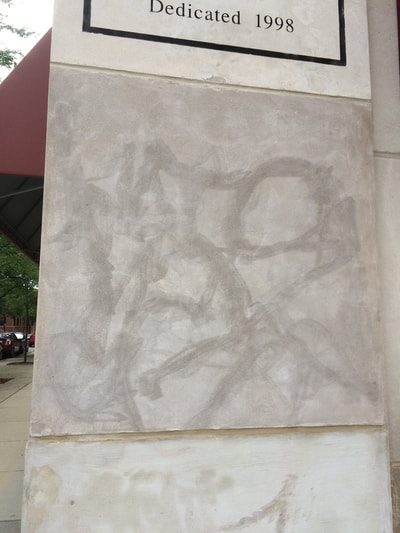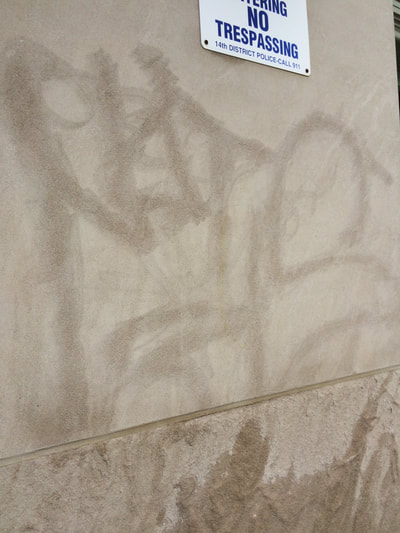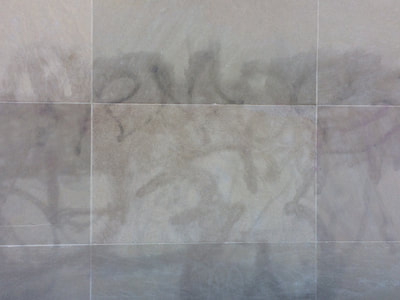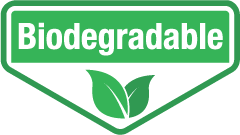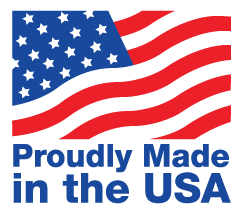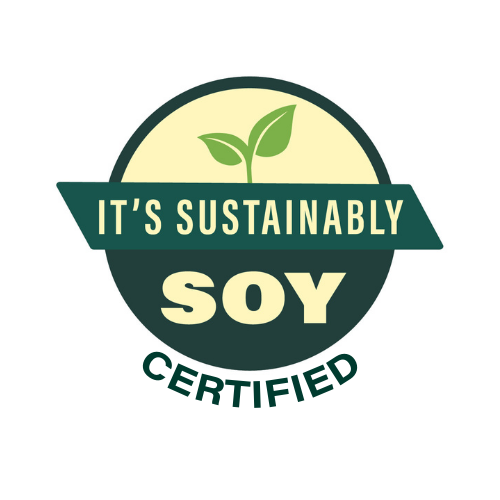How to Remove Graffiti Spray Paint from Concrete
3 Simple Steps to Remove Graffiti from Concrete Walls and Concrete Sidewalks.
Step 1: Spray, pour or brush Clean City Pro Red Label Graffiti Remover or Clean City Pro Blue Label Gel Graffiti Remover onto graffiti tag.
Step 2: Allow a moderate dwell time of 5 to 30 minutes
Step 3: Pressure wash using a wide, fan tip pressure washing nozzle such as 25 degree green tip. Repeat if necessary.
Step 1: Spray, pour or brush Clean City Pro Red Label Graffiti Remover or Clean City Pro Blue Label Gel Graffiti Remover onto graffiti tag.
Step 2: Allow a moderate dwell time of 5 to 30 minutes
- Note: A longer or shorter dwell time is possible depending on conditions. If spray paint is highly saturated, the brick is highly porous or the temperature is cold, allow for a longer dwell time.
Step 3: Pressure wash using a wide, fan tip pressure washing nozzle such as 25 degree green tip. Repeat if necessary.
|
STILL NOT SURE WHICH PRODUCT IS BEST FOR YOU? OR HAVE OTHER QUESTIONS? |
Tips and Tips and Techniques to Maximize Graffiti Removal Effectiveness from Concrete
Tip #1 - Time is your friend
Tip #1 - Time is your friend. The longer the dwell time, the more effectively the graffiti remover can soften the graffiti tag spray paint. Unlike conventional graffiti removers which evaporate rapidly, Clean City Pro graffiti removers are super low VOC and alcohol-free which results in very slow evaporation. This provides much greater dwell-time, effectiveness, economy, and ease of use with when compared with conventional graffiti removers.
If dwell time is adequate, graffiti spray paint will become soft and buttery. The softer the paint, the less pressure is required to rinse the graffiti paint from the tiny pores in the brick. Lower pressure is easier on brick, mortar joints, and older, more delicate historic brick. Lower pressure also allows a lower PSI, residential grade, electric-powered pressure washer to be as effective as a higher PSI, professional grade, gas-power pressure washer.
If dwell time is adequate, graffiti spray paint will become soft and buttery. The softer the paint, the less pressure is required to rinse the graffiti paint from the tiny pores in the brick. Lower pressure is easier on brick, mortar joints, and older, more delicate historic brick. Lower pressure also allows a lower PSI, residential grade, electric-powered pressure washer to be as effective as a higher PSI, professional grade, gas-power pressure washer.
Tip #2 - Warmer is better
Tip #2 - Warmer is better. Heat helps to accelerate the speed at which the graffiti remover can soften the spray paint graffiti tag. Graffiti removal is more effective when ambient temperatures are warmer. Summer temperatures allow more rapid graffiti removal. If in the Northeast or Midwest, expect longer dwell times during the cold winter months.
Warm water also increases the effectiveness of graffiti removal. If possible, connect pressure washer to warm water source. Higher end professional grade pressure washers have heating elements. Residential grade pressure washers will perform better if hot water is sourced, perhaps from slop sink faucet or domestic hot water heater. If attempting graffiti removal from brick during the winter, hot water is essential for achieving excellent results.
Warm water also increases the effectiveness of graffiti removal. If possible, connect pressure washer to warm water source. Higher end professional grade pressure washers have heating elements. Residential grade pressure washers will perform better if hot water is sourced, perhaps from slop sink faucet or domestic hot water heater. If attempting graffiti removal from brick during the winter, hot water is essential for achieving excellent results.
Tip #3 - Elbow grease to speed things along
Tip #3 - Elbow grease to speed things along. For small graffiti tags or if increased speed is required, scrubbing or abrasion with a stiff nylon bristle or brass bristle brush can be effective. For thicker paint, or multiple layers of paint, scrubbing tends to move the top layer of paint aside, allowing the next layer of paint to be exposed to the graffiti remover. This technique is especially effective when applied to paints that were brushed or to remove thick drips of paint. Scrubbing also allows for greater economy as a single application of graffiti remover can soften multiple layers of paint before being rinsed. Extra care should always be taken not to damage delicate historic surfaces including brick, terra cotta and limestone.
Tip #4 - A Little extra goes a long way
Tip #4 - Reapplying a little more graffiti remover during dwell time can make the process more effective. Clean City Pro Graffiti Remover remains active for as long as it remains in contact with the graffiti paint so reapplication during dwell time is not necessary. However, if any spots were missed or were very think during initial application, paint will remain fully bonded during pressure washing. By reapplying during the dwell time period, you increase your chances of full coverage and having a great result.
Tip # 5 - Do No Harm. How to Avoid Damaging concrete during Graffiti Removal.
Tip #5 - How to avoid damaging concrete during graffiti removal and do no harm. Concrete is a durable building material that is widely used on commercial buildings. Fortunately, concrete is strong and able to withstand multiple graffiti removal cleanings using graffiti remover and pressure washer. Split face concrete masonry units (CMU) tend to be more porous and is more challenging to remove graffiti from than poured in place concrete which typically has a denser composition. Smoother or polished concrete tends to be easier to remove graffiti from.
Many chemical techniques for graffiti removal from concretefail to remove all of the graffiti spray paint pigment. With uniform colored brick, if even a small percentage of graffiti spray paint remains bonded to the concrete, it is often visible to the naked eye, especially since concrete is a light uniform grey color. When graffiti spray paint remains visible after a partially successful graffiti removal, it is referred to as graffiti ghosting or graffiti shadow.
Concrete can be damaged by highly corrosive or highly acidic graffiti remover chemicals. Concrete can also be damaged by highly abrasive graffiti removal techniques such as soda blasting. Once the concrete's hard outer layer has been eroded away due to acid or corrosive chemicals or intense abrasion, the more porous inner layers are revealed, making it much harder to remover future graffiti tags. Concrete that have been exposed to graffiti and acid washed many times tend to be the hardest to clean graffiti from. The spongy inner concrete tends to soak up water and graffiti more deeply. Concrete in this condition should be sealed or protected with an anti-graffiti coating.
Many chemical techniques for graffiti removal from concretefail to remove all of the graffiti spray paint pigment. With uniform colored brick, if even a small percentage of graffiti spray paint remains bonded to the concrete, it is often visible to the naked eye, especially since concrete is a light uniform grey color. When graffiti spray paint remains visible after a partially successful graffiti removal, it is referred to as graffiti ghosting or graffiti shadow.
Concrete can be damaged by highly corrosive or highly acidic graffiti remover chemicals. Concrete can also be damaged by highly abrasive graffiti removal techniques such as soda blasting. Once the concrete's hard outer layer has been eroded away due to acid or corrosive chemicals or intense abrasion, the more porous inner layers are revealed, making it much harder to remover future graffiti tags. Concrete that have been exposed to graffiti and acid washed many times tend to be the hardest to clean graffiti from. The spongy inner concrete tends to soak up water and graffiti more deeply. Concrete in this condition should be sealed or protected with an anti-graffiti coating.
Concrete: Examples of Etching Damage to Concrete Caused by bad graffiti removal technique, Corrosive Graffiti Removers, or Soda Blasting
Brick: Examples of Etching Damage to Brick Caused by bad graffiti removal technique, Corrosive Graffiti Removers, or Soda Blasting
Limestone: Examples of Etch Damage to Limestone Caused by bad graffiti removal technique or Abrasive Graffiti Remover, such as Soda Blasting
Most chemical graffiti removal techniques require a pressure washing following the application of the chemical graffiti remover. This is an important step which rinses chemical graffiti remover and any dissolved or broken spray paint from the concrete substrate. Care must be taken to reduce the PSI of the pressure washer so that the intense pressure does not damage the brick surface by etching away the top layer of concrete. Etching damage can easily be caused by a red-colored zero-degree spray nozzle. To avoid this, it is recommended to use a wide, fan-tip pressure washing nozzle such as a green 25 degree nozzle. The wide fan tip diffuses the pressure and reduces the PSI on the concrete. This reduced pressure decreases likelihood of causing permanent etching damage to concrete.
